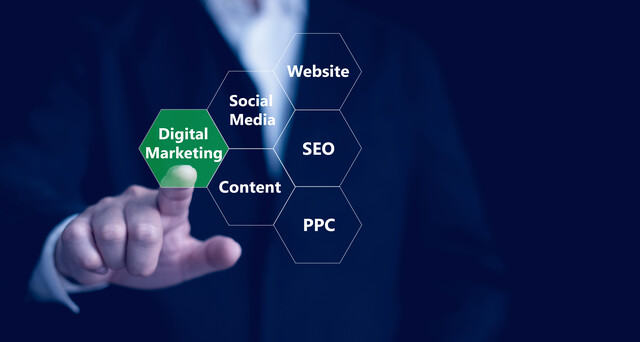Do you start your workday by checking your e-mail inbox? Do you continue to check it throughout the day? You are not alone. The average office worker sends or receives 121 e-mails each day, according to a recent report by the Radicati Group, a technology market research firm.
With that volume of messages to wade through, it is easy to fall into lazy habits with your messages.
The great thing about e-mail is that it is quick and easy. The bad thing about e-mail is that you cannot take back a message once it has been sent. Therefore, before you hit the send button on any e-mail, it is important to follow some tried and true principles of good etiquette.
Here are our top 20 important rules for e-mail etiquette.
1. First things last. Have you ever hit "send" before you proofread your message and lived to regret it? We all have. You can avoid this potentially embarrassing situation by waiting to type in your recipient's address until you have finished the message. While you're at it, double check that the address is correct before hitting "send." It is easy to select the wrong name from your contact list. Never guess at the spelling of someone's name. You could be just one letter off and end up sending the e-mail to the wrong person.
2. Include a brief, yet clear, subject line. With all the messages coming into our inboxes each day, we want to be able to tell quickly which ones to open and which ones to delete. You boost your chances of your message being read by including a direct subject line in all your business correspondence.
Use as few words as possible to convey your point with the range of three to seven words being optimum. Examples include, "New meeting schedule," "Follow-up to your proposal," and "Third quarter marketing results." When you use a phrase that lets your reader know your message is important, you show them that you value their time and that you are addressing their business interests. If you are responding to an e-mail with a blank subject, line, go ahead and fill an appropriate one in.
3. Use a professional e-mail address. Your e-mail address reflects much about the sender. If your business e-mail address has a nickname or a cutesy phrase that would be better for a pre-teen, your recipients may have a hard time taking you seriously.
Create an e-mail address that includes your name so that your recipients know at a glance who is writing to them.
4. Use a professional salutation. A professional e-mail should include a professional greeting that is based upon how well you know that individual. Avoid shortening a first name (from David to Dave or Patricia to Pat) unless you are sure the recipient goes by that shortened version.
Use the word "Dear" or "Hello" followed by the person's name, but avoid the overly informal "Hey." In America, we are accustomed to hearing our first names, but it is always appropriate to use "Mr." or "Ms.," followed by the individual's last name as a sign of respect, especially when communicating with someone you do not know.
If the e-mail is going to a large group, or if you don't know the name of the person you are addressing, use a polite, yet generic, opener. "To whom it may concern," or "Dear Sir or Madame," are tried and true stand-bys for business correspondence, but they can sound a little stuffy. You could try "Hello," "Good day," or "Greetings," as salutations to unknown individuals. Other options for group e-mails are "Hello everyone," or "Dear board members."
5. Introduce yourself briefly. Although your e-mail address and subject line will usually do the trick, it does not hurt to identify yourself to your recipient. This can be a brief reference to your title with the company, or to when you met the individual. A detailed biography is not necessary. Here's an example: "I am following up on our conversation yesterday at the Chamber of Commerce meeting. I enjoyed talking with you over lunch."
6. Do not write about anything you would not want shared with others. Don't be fooled. There is no such thing as a private e-mail. The fact is that any e-mail can be forwarded and shared with many people. Make it a rule of thumb that you do not send any work-related e-mail that you would not feel comfortable being posted on an office bulletin board. Another way to look at it is not to write anything in an e-mail that you would not hesitate to say to a person's face.
7. If you are angry, wait to send that e-mail. Here's where the accessibility and speed of the technology can get you in big trouble. If you are upset with your boss or with one of your employees, take the time to cool off before you fire off an angry message.
By the same token, do not disparage your colleagues in an e-mail to someone else in the office. Angry e-mails can take on a life of their own.
8. Watch overuse of exclamation points and ditch the emoticons. Exclamation points should be used sparingly or else your messages can come across as immature or even worse -- as angry. Save the smiley faces for your social media posts with friends. They are not professional. Period.
9. Limit all caps. Use your words to emphasize your points, rather than using all capital letters. USING ALL CAPS CAN MAKE IT SEEM AS IF YOU ARE SHOUTING. No one wants to be shouted at.
10. Do not share confidential information. Be very careful in sending (or forwarding) sensitive business information. Refrain from sending information that could put someone's identity at risk, such as social security numbers or tax information. Be wary of e-mailing private financial information that could be damaging if it got into the wrong hands.
11. Avoid jargon and be careful with humor. Text-friendly phrases such as "Gr8" and "4U" have no place in business correspondence. They make you look childish. One of the pitfalls of communicating by e-mail is that your reader cannot see your eyes, gestures, or facial expressions, or hear the tone in your voice. Therefore, your tone can be misinterpreted. As a result, it is a good idea to be very cautious with humor, sarcasm, and with slang terms. You don't what to come off as rude or offensive in any way.
12. Get back to people. Don't feel you have to respond to an e-mail immediately. In fact, time management experts agree that checking your e-mail constantly can be a real time waster. One option is to check your inbox three times a day -- first thing in the morning, just before or after lunch, and just before you leave for the day.
It is important than you get back with your senders in a timely fashion, however. Unless you are dealing with an emergency, it is acceptable to respond within 24 to 48 hours, or longer, if a weekend is involved.
Similarly, be patient with others who do not get back to you right away.
13. Be careful with "reply all." You know how annoying it can be to get your inbox flooded with unnecessary responses. Do not hit "reply all" unless you are sure everyone needs to see your response. Most of the time, they do not.
14. Don't send an e-mail when you need to talk in person or by phone. E-mails are great, but they are not the perfect form of communication. In situations that need explaining or negotiating, or just a more personal touch, there is nothing like a face-to-face meeting.
If you need to deliver bad news, an e-mail is not the proper medium. Arrange to meet with the person, or at least make a phone call.
Also, avoid using e-mails as a way to cancel a meeting or an interview at the last minute. There is no way to know the recipient got the message in time.
15. Only use the "high priority" option when the message is really important. It's kind of like the classic, "The Boy Who Cried Wolf" story. If you overuse high-priority, it will be difficult for people to take your messages seriously. Evaluate the importance of your e-mail. Instead, let your subject line inform you reader of the significance of the message.
16. Protect your recipients' privacy in group e-mails. Many people are touchy about who gets their e-mail addresses. To be on the safe side when messaging a large group, use the "BCC" option. BCC stands for blind carbon copy and ensures that e-mail addresses are hidden from view. Simply type your own e-mail address in the To: field and type your recipients'' addresses in the use BCC field.
Keep in mind that this is not a foolproof method. One of your recipients may hit "reply all" and by doing so reveal to everyone that she got the original message.
17. Get to the point. Business e-mails should be concise. After your brief introduction, you should state the purpose of your message within a sentence or two. Be clear and avoid long, drawn-out explanations. If your recipient needs more information, they can contact you.
18. Include an appropriate closing. Even though you have identified yourself in your introduction and with your e-mail address, a polite e-mail also includes a closing followed by your name. Professional options include "With regards," "All the best," "Looking forward to working with you," and "Many thanks."
Avoid phrases that could sound pretentious (at least for Americans), such as "Ciao!" or "Cheers!" or ones that sound overly friendly or informal such as "Hugs" or "Love."
19. Make it easy to contact you. Always include your full name and contact information at the end of your business e-mails. Your e-mail signature is a good way to let your recipients know more about you. Include the name of your company, your title and your phone number. It's also a great place to add a link to your website and social media pages.
20. Proofread. Proofread. Proofread. Read over your e-mails before sending them. Do not rely on spell checkers, because they don't catch many mistakes. For example, "Sorry for the inconvenience," could be autocorrected to "Sorry for the incontinence." Try reading your message aloud to help you catch errors.
Think of your e-mail correspondence as a reflection of you. If your e-mails are sloppy or sound rushed, your recipients will think you are careless in your work. If your e-mails are filled with errors, your readers will think that is how you conduct business.
On the other hand, if your e-mails are friendly, yet professional, in tone, and clearly written, you will convey a sense of competence that will carry over into their dealings with you.
It may sound as if it goes without saying, but be sure to read an e-mail that you receive carefully before replying to it. We are all busy, but you can do your reputation considerable harm by dashing off a response in haste without fully reading the original message.
As Judith Kallos writes in her book Business E-mail Etiquette, if you don't have time to fully read an e-mail before responding, wait to respond until you have the time to read it.
If you have an assistant or staff member who may be corresponding with your clients or colleagues, be sure to train them in e-mail etiquette. Don't make the mistake of assuming others know how to communicate professionally. It's a good idea to set up e-mail standards that everyone in your company can follow.
According to a study by Sendmail, 64 percent of survey respondents have either sent or received an e-mail that resulted in unanticipated anger or confusion. The reasons cited for the trouble included "lack of a reply" (51 percent), too many "reply alls" (25 percent), confusing or vague content (19 percent) and too many e-mails, in general (18 percent).
By being aware of these potential pitfalls, and by adopting better e-mail etiquette, you can help your business run more smoothly and productively. Next, let's look at other components of an effective e-mail.



























